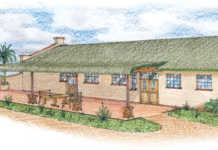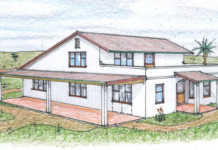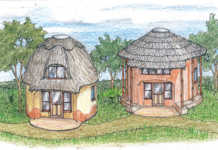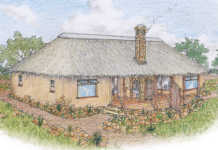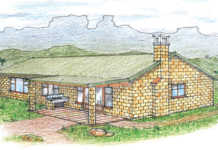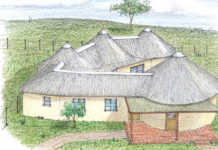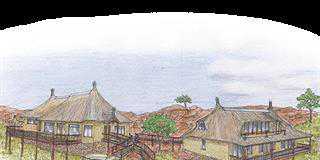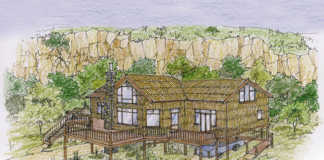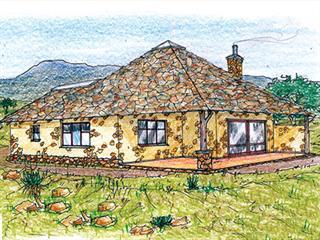
The final design and functionality of the units will have to take many factors into account: the level of luxury required, whether the visitors are single people, couples or families, the amount of privacy demanded, the type of communal gathering area, the planned catering facilities, and more.
Because there are so many options at this stage, the proposed layout is flexible: the floor plan is divided into equal sections (see 1 to 4) and these can be interchanged as needed. Once the developer has finalised the accommodation required, the layout can be adapted accordingly. I suggested that the developer photocopies the layout, cuts out each section, and arranges the cut-outs to look at various alternatives.
For example, sections 1 and 2 could be left as shown, or section 1 can be brought forward to line up with the front and back walls. Sections 1 and 2 could be combined, either with either section 1 mirrored, or section 1 combined with section 4, while sections 2 and 4 could be used as a two-bedroom unit.

One of many possibilities is the option illustrated here. In this example, I have shown unsquared quarried slate used as roofing material, but thatch or any other roof covering could be used. Due to the fire hazard of thatch, the higher insurance premiums, and the need for replacement in time, it was recommended to these game farm owners that they spend a little more on alternative roofing material.
The slate roofing shown does have the usual thatch underlay, however, as well as internal open rafters. This type of roofing is tried and tested, and will last a hundred years or more. It is also rustic and environmentally friendly.
Jonno

